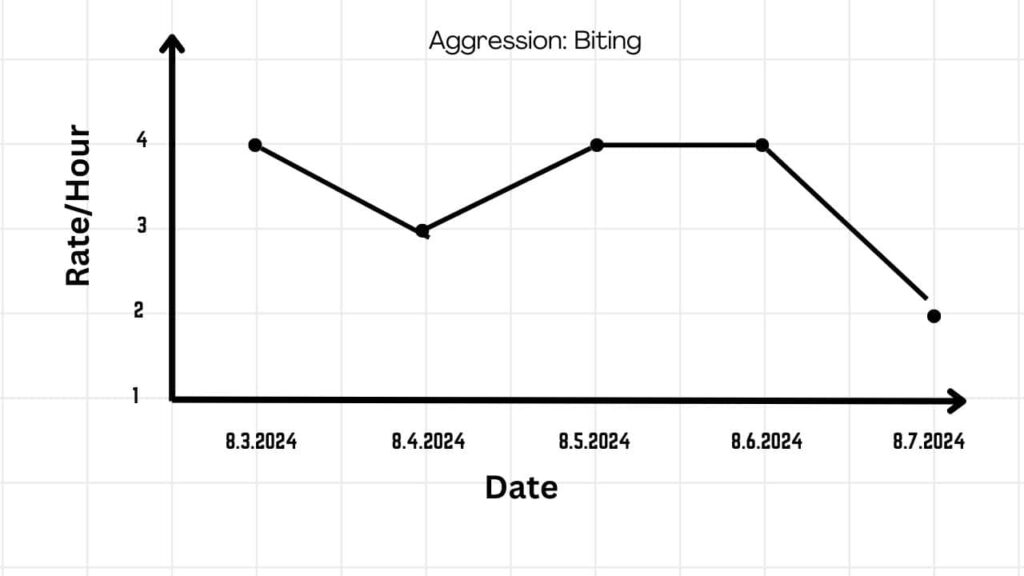Measurement is the first topic of our free RBT study guide. It’s an essential topic for Registered Behavior Technician prep because 12 questions will be asked in the RBT exam.
Measurement is the backbone of applied behavior analysis (ABA). It enables technicians to accurately assess, monitor, and analyze behavior changes. Without it, tracking your client’s progress and modifying the therapy and behavior intervention plans are impossible.
This guide focuses on essential measurement techniques for the Registered Behavior Technician (RBT) exam, covering data collection methods and interpretation skills.
1. Prepare for Data Collection
An RBT should have data collection materials ready before every session. Data collection is a crucial component when delivering services to clients.
We have listed some required materials for data collection below for a Registered Behavior Technician:
- If your company uses paper data collection, you must carry a paper data sheet and a pen before each session.
- If your company collects digital data, you must have a tablet or other electronic device before each session.
- You should have a timer to track target behaviors’ duration, inter-response time, or response latency.
- You must also have a clicker to count the number of times a target behavior occurs.
2. Implement Continuous Measurement Procedures
Registered Behavior Technicians use different techniques to track and record behavior consistently. It enables BCBA to analyze behavior patterns and make informed decisions regarding interventions accurately.
Here are four types of continuous measurement procedures that will be asked in the RBT exam:
- Frequency: It is a continuous measurement procedure that measures the number of times or counts of a behavior or response.
- Latency: It measures the duration between the end of SD (discriminative stimulus) and the beginning of a response.
- Duration: It measures how long someone engages in a behavior.
- Inter-response Time (IRT): It measures the time that elapses between instances of a particular behavior.
3. Implement Discontinuous Measurement Procedures
Discontinuous measurement procedures are used to measure some instances of behavior but not all. This procedure is used when it becomes difficult to record all occurrences of behavior. There are mainly three types of discontinuous measurement techniques:
- Whole Interval Recording: The observer notes whether the behavior is occurring constantly. This method is usually used for behaviors you want to see more of. However, it might not show the behavior happening as much as it does.
- Partial Interval Recording: The observer notes if the behavior happened at any point during the interval, often used to decrease unwanted behaviors. However, it might make the behavior seem more frequent than it is.
- Momentary Time Sampling: In this procedure, the observer tracks whether a behavior is happening at certain times. The observer quickly checks if the behavior is happening at that moment, like taking a quick picture.
4. Implement Permanent-Product Recording Procedures
Permanent product recording is a measurement procedure in behavior analysis that focuses on the outcome instead of the process. For example, if a client is asked to organize the bed before going outside, the observer will check whether the bed was made when the client went outside. It’s like checking the final result instead of monitoring the client making the bed.
5. Enter Data and Update Graphs
The RBTs record behaviors and skills and present them as charts and graphs. The BCBAs analyze those graphical data and make treatment decisions accordingly. A registered behavior technician must know to present recorded data in graphical and chart formats using a digital data system.
The chart below shows that the client’s biting rate (behavior) is presented on the Y-axis, and the date (or session number) is presented on the X-axis. This is how an RBT should present the graphical data to BCBA.
From the chart below, it can be observed that the biting rate decreased after the first session (8.3.2024 to 8.4.2024), and it increased after the second session (8.4.2024 to 8.5.2024), then constant after the third session (8.5.2024 to 8.6.2024), sharply declined after the fourth session (8.6.2024 to 8.7.2024).

6. Describe Behavior and Environment in Observable and Measurable Terms
In Applied Behavior Analysis (ABA), we describe behavior and environments using observable and measurable terms. This means focusing solely on actions that can be objectively seen and quantified. You should not add language based on your thoughts or assumptions.
For example, instead of writing, “The child was really anxious today,” we would write, “The child avoided eye contact, fidgeted, and spoke softly.” This approach ensures accurate assessment and intervention planning, adhering to the principle that if a “dead man” could do it, it’s not a behavior.
